
19.10.2015
A conversation with Inés Katzenstein about pedagogy, art and the Artist Program at Instituto di Tella in Buenos Aires.
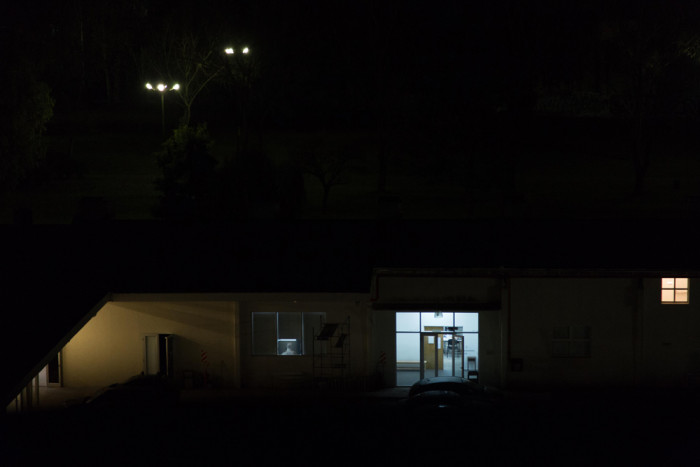
Juan Canela: Inés, after you trained as a curator and worked on a number of projects, and at several institutions in Buenos Aires, you went on in 2009 to found the Torcuato di Tella University Art Department in the same city. What led to that decision and what drives you to stay involved in teaching?
Inés Katzenstein: Working in a museum like the one I was at (MALBA) I often felt I was too far removed from artists’ thought processes and discussions of ideas that interested me. The sort of program that could be carried out in a museum back then didn’t seem to include art’s process-related or “conversational” (not to mention theoretical) dimensions. This was taking place on a personal level, at the level of desire. On the other hand, I had been talking to Di Tella for years about the need to create an educational project in Argentina and when a possibility of doing it finally opened up, there was no doubt in my mind. There were too many lacunae in the educational offering for artists. And the possibility of bringing about a change in that realm was very interesting to me.
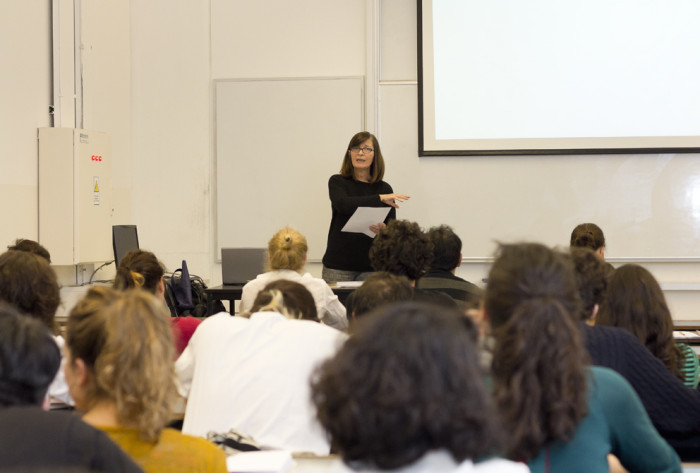
JC: If we think about what artistic education really is… What does it mean to teach something we can barely define, or whose definition changes with everyone who issues such a definition? Taking it to the logical extreme, Isidoro Valcárcel Medina states that “art can be learned, but not taught.” What does teaching art mean to you? And therefore, what would be an appropriate way to do so today—at a time of such important changes when it comes to transmitting knowledge and how such knowledge is produced, and, consequently, when it comes to changes in the teacher-student relationship?
IK: I’d like to share a response with you I sent a couple of days ago back to Lisette Lagnado, who’s producing a publication based on the question of what a “free school of art” means. What I wrote to Lisette—which I think might answer your question—was this:
“A free school would be a space capable of producing situations and ideas within which each individual could explore what freedom might be. And along the path of mastering that freedom, the school would accompany anyone who was looking for a tone of their own; a tone from which to do things that go beyond clichés and utilitarianism.
“I do not have a formula for such a school, but I would recommend always keeping a piece of paper next to your desk, inscribed with Eva Hess’s statement: ‘vision or concept will come through total risk, freedom, discipline.’ Commitment would be another essential component of the experiment.”
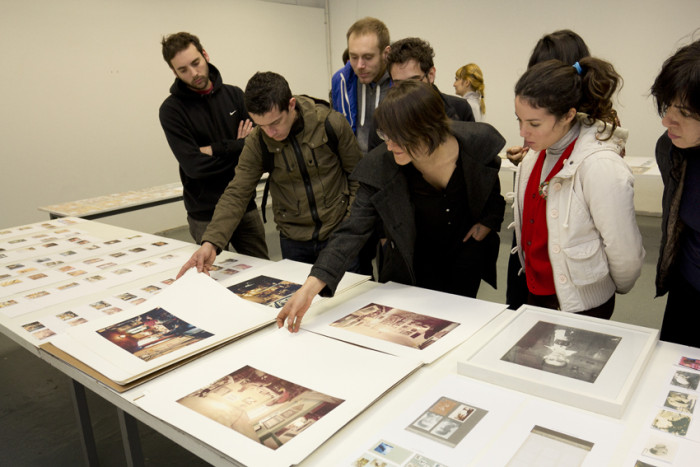
So what I’d tell you is that I work in artistic education with the idea of creating spaces for the never-before-seen. But I started doing it before I’d had too much teaching experience. Or better yet, I’d tell you that to conceive of the program, I relied less on on technical knowledge of education than I did on skills we might call “curatorial.” Guided by intuition I investigated means of articulation that exist between elements (in this case artists, theorists, methodologies) with a notion of creating some new totality whose most prominent traits included the fact it was unpredictable.
JC: In a text that emerged from her experience at the Institut Kunst in Basel, Chus Martínez recently reflected on the possibility of creating an art school based not on curricula, but rather, on an anthropology of the biosphere that would critically tackle today’s obligation of total communication and collective contemporaneity. So what’s an art school for you and how do you posit its future?
IK: I’d like to imagine an art school that wasn’t governed by an art curriculum—one that would fuse with other learning modes and other discipline-related content. Not so that art would dissolve or disappear as a specific activity, but instead, so that it would reinvent itself. But I wouldn’t know how to do it alone. Maybe we have to do it with Chus!
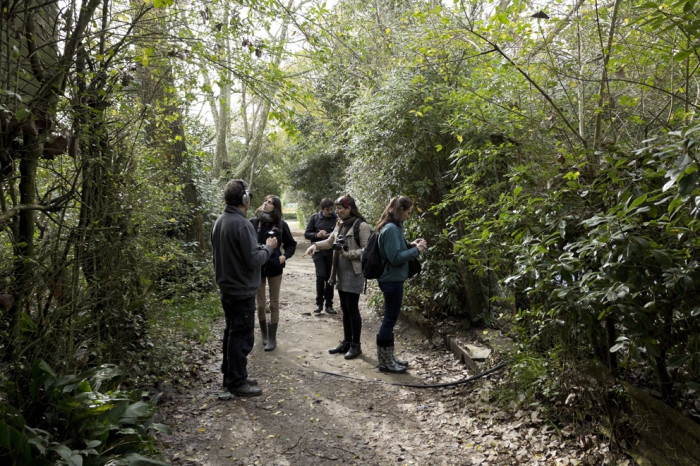
JC: A while back we were talking about the Artists’ Program and you told me about the ideal of starting a BFA-equivalent (or other such undergraduate degree) in art at Di Tella. How is the Art Department currently structured? And what is the Artists’ Program?
IK: The Department’s current main program is the Artists’ Program (which includes a curatorial sub-program); there’s a cinema area designed to work in permanent dialogue with the visual arts; and there’s an exhibition, conferences and symposia program that is open to the public. The undergraduate degree project has yet to be consolidated.
The Artists’ Program lasts a year and is aimed at artists, critics and curators who are still in training; there are 23 slots in each edition. To date, 170 participants in Argentina and a number of other countries have gone through the program. It also includes an annual Seminar (critique, clinic) as well as a series of “workshops,” “theory courses” and conferences that can largely be attended by people who are not in the Program. In other words, it works as a platform that’s quite open.
Given its condensation into the timeframe of a year, its demands take on a pronounced intensity; one of the students who took part in the first edition, Mercedes Azpilicueta, noted it has a “turbo” sort of intensity. This question of intensity is a tactical consideration: it points to immersion within a work atmosphere that is a motivating experience in itself and that calls for a particular kind of commitment and focus. Yet amid the whirl, at every stage of the Program—in every discussion or every exercise—we’re proposing a kind of temporal “deceleration.” A special form of attitude and attention that works to pull you out of the whirlwind.
JC: The art-education context in Buenos Aires and Argentina is quite particular. There’s a very important informal component as well as a very characteristic tradition that follows a critique format. Could you talk to us a little bit about the context, questions or particularities that come along with that informality? How does the Di Tella and its Artists’ Program come together within that?
IK: When we began in 2009, the local arts education panorama was exceedingly self-evident: the only public visual arts school then found itself—and continues to find itself—in a crisis state, unable to hold on to its students all the way through. On the other hand, unlike in countries such as Chile or Colombia (to name just two regional examples), in Argentina, no private university concerns itself with seriously training contemporary artists. The informal offering that was spread across the city in a sprinkling of classes and programs run and overseen by artists was (and continues to be) surprisingly dynamic but from my point-of-view is largely predicated on an effect-based or mannerist conception of the artwork; art as a self-absorbed phenomenon, isolated from a capacity for thought about the larger world.
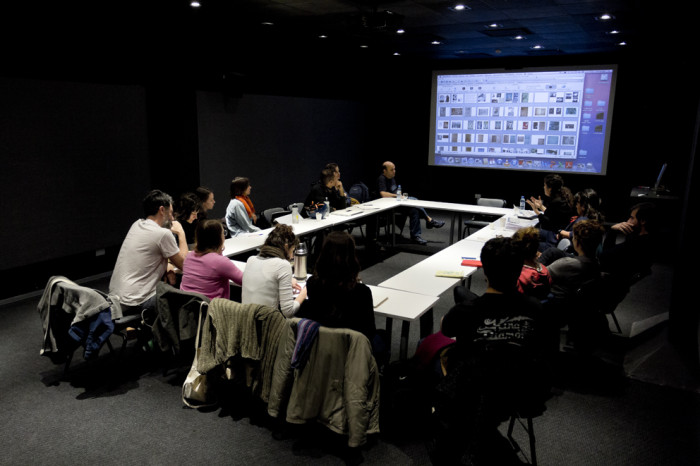
Nevertheless, the informality of the panorama produced a situation that at a certain point is positive artistically, which is the all-but-null existence of generalized canons or standards that condition artistic production—something a lot of us “salvage” as a possibly liberating trait, especially in comparison to scenes where schools operate as what we pejoratively call “academies.”
With that in mind, the mission we set up for ourselves with the Artists’ Program in its first phases was to attack the most heinously bankrupt theories and methodologies related to artist training in a work environment that did not institutionalize production and was not based on banal ideas of professionalism. In short [we sought] to attract artists to a university environment but without pretense to “erudition” in the narrow sense, by providing them with tools but eschewing predefined languages; and accompanying them on their growth processes in relation to the institutional, but with deliberate indifference to the subject of insertion into the system.
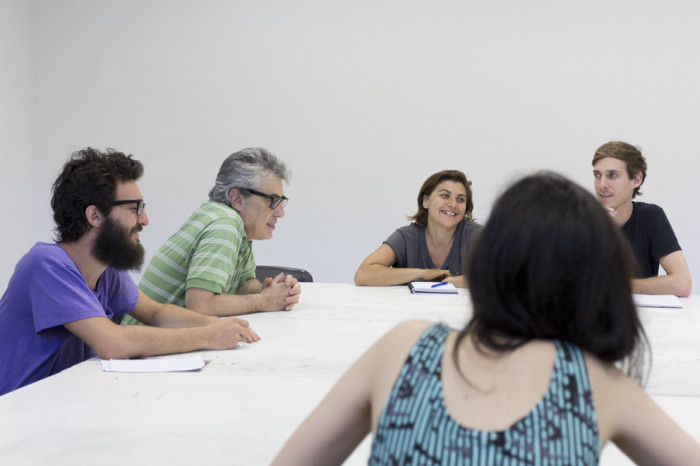
With regard to what are known as clínicas de obra—i.e., “work clinics”—this is one of the most characteristic dynamics of the local scene. They are collective discussion situations that center on an artist-student’s work, in the presence of a permanent professor who may be afforded a greater or lesser leading role in the conversation, as necessary. The dynamic mixes different Argentine traditions: psychoanalytic transference (that odd “vote of confidence” for an other into which desire is invested), horizontal work between artists (that often acts as a kind of affectivized “unionism” or “guild”-building strategy) and the more or less desultory air of a coffee klatch. In the Program’s first years we decided to stick with those traditions, based on group trust, and set up the “clinic” as an annual Program milestone. Later things would change…
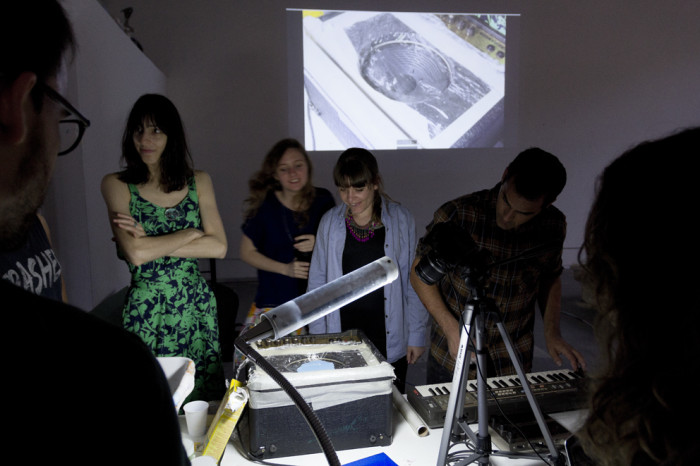
JC: One of the issues that interests me most about the Artists’ Program is its odd position as a middle ground. Specifically, I think that one of its greatest virtues is how it molds or combines the informal side of Argentine tradition, the “clinic,” as we discussed, with the University’s more formal character; the local with the international; producing work with theoretical reflections; or even that artists are sharing a learning space with curators and critics… What was your idea when it first came to these issues, and how have things evolved? Where are you now and how do you regard the project’s future?
IK: When it comes to thinking about the Program, I like to feel that we’re pulling off a kind of balancing act. I like acting in a programmatic fashion, but don’t want to lose the receptivity. That’s why the Program operates dynamically and as a sum-total of the differences. Not just in relation to the types of professors we invite in, but as well with regard to the platforms from which we propose to act. I’ll give you an example.
At the same time we started the Argentine-style “work clinic” I just described, we’re also interested in undoing the clinic professor’s centrality and proposing decidedly experimental situations that challenge ideas of artwork and identity that have been such a pronounced part of art education tradition. To do that we established a series of mandatory workshops that are the spaces where I feel we’re able to develop a true pedagogic investigation by navigating a course between the two most consolidated methodologies in arts education today, i.e., the discursive tendency, an heir to conceptualism, and the technical tendency, handed down from the academy. With the workshops and their exercises, the idea was to look into the open space that lies between those two tendencies: a space relative to thought in action, ideas materialized and for reflecting on bodies.
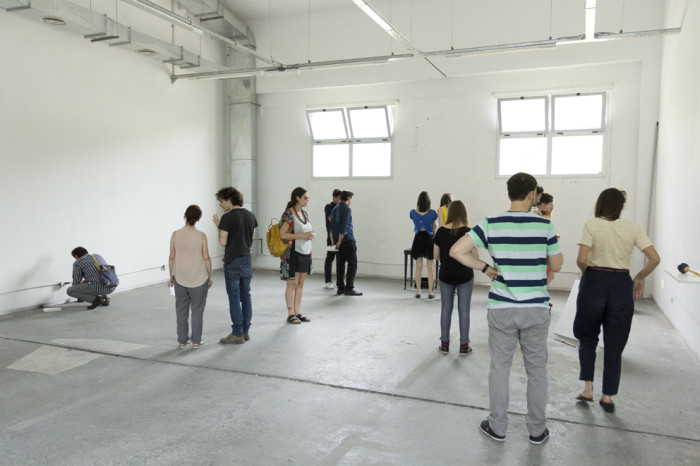
So the workshops and their exercises are spaces where every professor proposes modes of action or thought based on his or her own interests and discoveries (what he or she knows), but as well, based on that professor’s own intuitions regarding the immanence of new sense-related possibilities (what he or she doesn’t know). We’ve had a lot of workshops that “coach” notions of perception; others focused on improvisational processes; others that were project-focused; some had a theoretical or critical emphasis…and then there were a great many hybrids.
On the other hand, now that we’ve completed four editions of the Program, and seeing that the clinic tended to foster too much complacency, and too much chumminess, I understood we had to change something to do away with that state of acritical pseudo-harmony (which I love—but only on vacation). So we dropped the bomb: we decided artists needed to make some room for a group of curation students with whom they’d share the annual clinic and with whom they would collaborate on the final exhibition. Starting three years ago, the Artists’ Program also contains a group of six young curators. I think the formula—thanks to the friction it generates—has been very productive when it comes to an ability to create a work environment that’s at once collaborative and critical, amicable yet organically imbued with the tensions inherent to the art system.
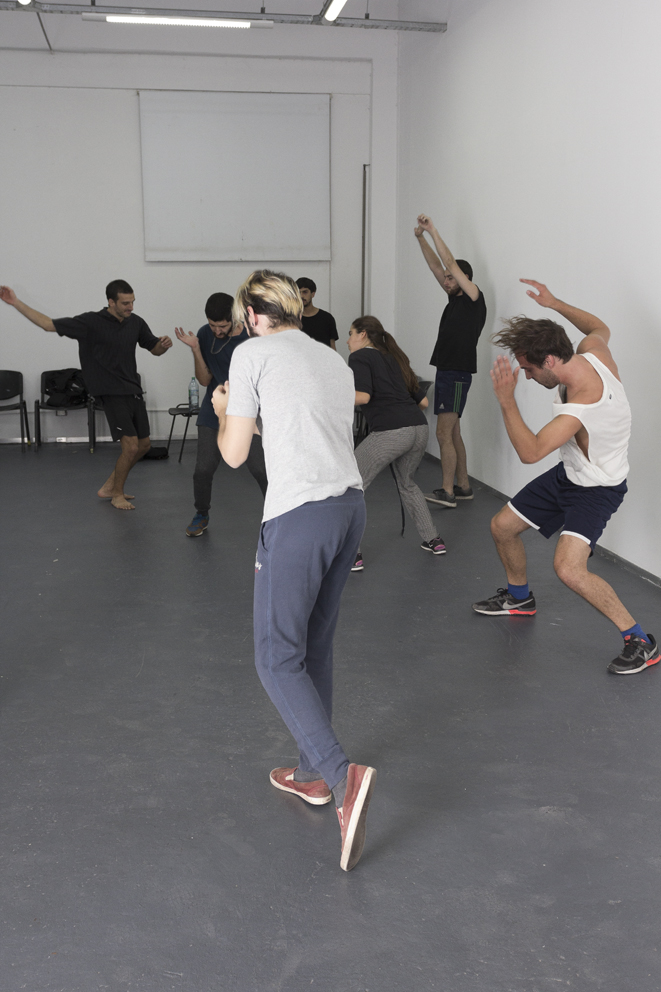
JC: So in that sense—and this is to wrap things up—how do you see the artistic context in Argentina and its relationship to what’s going on internationally? What role do you think education plays in the art system? Where should it position itself?
IK: In relation to the first part of your question, we Argentines have traditionally had an exceedingly paradoxical relationship with the “international.” We’re far enough away, and our system is precarious enough for us to believe in a certain degree of political autonomy in relation to the global mainstream. That is, globalization notwithstanding, there is a robust local scene that traffics in values more or less its own. At the same time, we know we can only reach our potential through dialogue with others. So that tension is a permanent feature in our conversations and to a great degree defines many of our positions.
As for your second question, I believe what you call the pedagogic, i.e., school, should position itself as a constructive and integrating force; in other words, one that offers students the conceptual and technical tools to produce something that has the expressive capacity of that which we understand as “art” but that at the same time is an element of dissent, of critique, and that offers some chance of expanding the field and problematizing it.
Comments
There are no coments available.